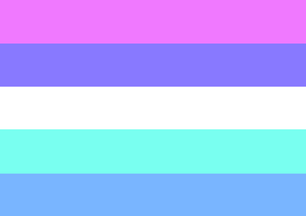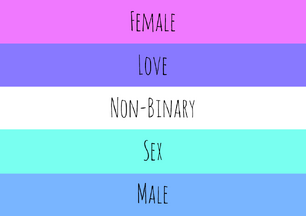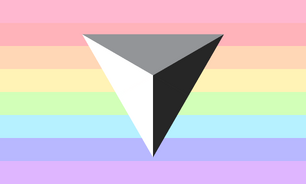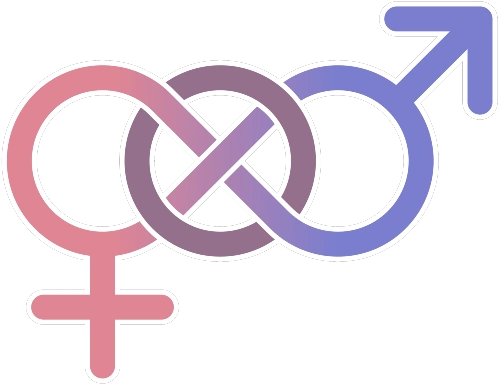m (Fixed color grading for alternative expanded flag, some framing issues (white band on edge), and changed the scale to it is the size of a standard flag so people can have it printed!) Tag: Visual edit |
m (Since I LOVED the colors, I also added a second alternative flag with some new dimension. Images are all free use of course!) Tag: Visual edit |
||
| Line 37: | Line 37: | ||
The yellow represents happiness because spectrasexual people should have a reminder that they are capable of finding happiness just as much as any other sexuality. |
The yellow represents happiness because spectrasexual people should have a reminder that they are capable of finding happiness just as much as any other sexuality. |
||
| + | [[File:SpectrasexualFlag.png|alt=Spectrasexual Expanded 11-Color Flag|thumb|306x306px]] |
||
| − | |||
The gray is for attraction to a mix of genders. It is representative of nonbinary people but not necessarily just nonbinary people as the spectrum of genders is as complicated as sexuality if not more. The gray is also a reminder of the spectrum-nature of this sexuality as the hexcode is #dbdbda but because it is surrounded by other colors, it changes the appearance of the color, so too do spectrasexual peoples' individuality shape the way their sexuality will manifest. |
The gray is for attraction to a mix of genders. It is representative of nonbinary people but not necessarily just nonbinary people as the spectrum of genders is as complicated as sexuality if not more. The gray is also a reminder of the spectrum-nature of this sexuality as the hexcode is #dbdbda but because it is surrounded by other colors, it changes the appearance of the color, so too do spectrasexual peoples' individuality shape the way their sexuality will manifest. |
||
Revision as of 20:39, 19 October 2020

The main definition of spectrasexual is : people who identify with this term are sexually attracted to multiple genders, but not necessarily all genders. They may or many not have a preference, but regardless of that, they partially take gender into account and partially take personality into account.
The definition varies depending on who you ask but that is the most common version.
Flag

The pink and blue stripes on either side of the flag represent the two binary genders (male and female). Their position on the flag represents that they are at two opposite ends of the gender spectrum. The white stripe that is in the middle represents genders outside the binary. It is in the center because non-binary identities are often but not always in between male and female. It is also in the center to show that non-binary identities are neither male nor female. The purple stripe represents deep love and the green/turquoise stripe represents sex and sexuality.
Alternative Flags

This flag consists of 11 bands of color and is representative of the more expansive and diverse nature of this sexuality.
The white band represents attraction to all sexualities for those spectrasexual individuals who experience their sexuality in this way.
The pink represents attracted to fem-aligned genders.
The red represents courage as many spectrasexual people have to constantly defend their sexuality from misconceptions by more established sexualities (see below).
The orange is for creativity as spectrasexual people learn to navigate their sexuality without the guidebook offered to their bi, pan, and polysexual siblings.
The yellow represents happiness because spectrasexual people should have a reminder that they are capable of finding happiness just as much as any other sexuality.

The gray is for attraction to a mix of genders. It is representative of nonbinary people but not necessarily just nonbinary people as the spectrum of genders is as complicated as sexuality if not more. The gray is also a reminder of the spectrum-nature of this sexuality as the hexcode is #dbdbda but because it is surrounded by other colors, it changes the appearance of the color, so too do spectrasexual peoples' individuality shape the way their sexuality will manifest.
The green is for respect to remind spectrasexual people to respect themselves and their identity as valid and to ask allies to do the same.
The blue is for power to remind spectrasexual people of their unique identity and to celebrate that.
The indigo is for compassion to instill in spectrasexual people a caring for each other and a desire to form connections with other sexualities.
The violet is for attraction to masc-aligned genders.
And the black is for attraction to people not aligned with a gender (agender people and those who fall outside the spectrum between masculine and feminine.
Misconceptions
Because it is fairly similar to other sexualities, there are quite a few misconceptions that others could have about it.
- Spectrasexuality is the same as polysexuality - polysexuality is an umbrella term under which spectrasexuality is under, therefore they are not the same.
- Spectrasexuality is the same as bisexuality - while spectrasexuality is also considered being sexually attracted to two or more genders (similarly to bisexuality), they are still different. Bisexuality takes into consideration someones gender a lot more than spectrasexuality does, spectrasexuality cares a lot more about personality.
- Spectrasexuality is the same as pansexuality - people who are pansexual are always attracted to all genders whereas only some people who are spectrasexual are attracted to them all. Pansexuals also only care about someone's personality and not their gender, however spectrasexuals do still slightly care about someone's gender as well as their personality.
History
The earliest known usage of the word online, is on 16th August 2006 on a spanish powerpoint.
Other Definitions
Here are some of the other definitions acknowledged by some spectrasexuals.
- A term that describes people who are sexually attracted to multiple or varied genders and gender identities - but not necessarily all or any
- The attraction towards a wide range of genders and bodily formats on the spectrum that is gender. An attraction based not entirely on personality but appearance.
- Someone who is attracted to a wide range of genders and gender identities. Different to omnisexuals/pansexuals who are not concerned with gender at all.
